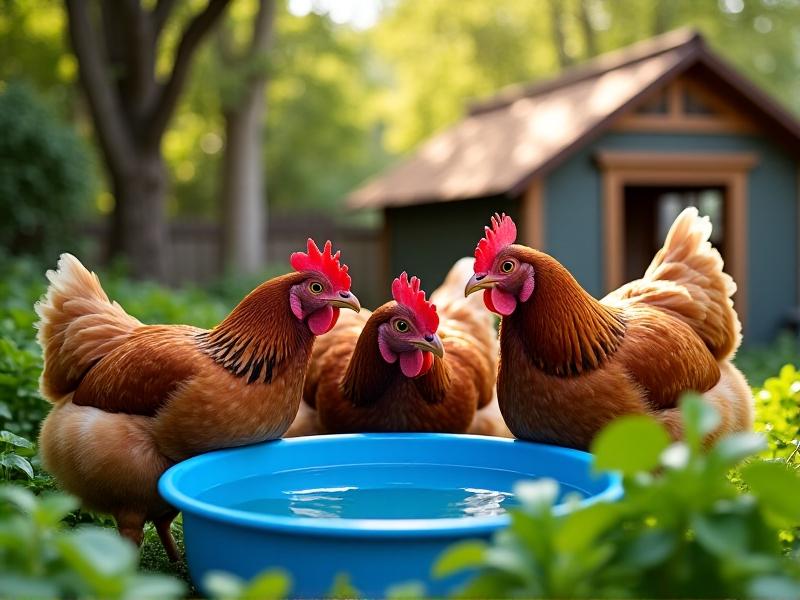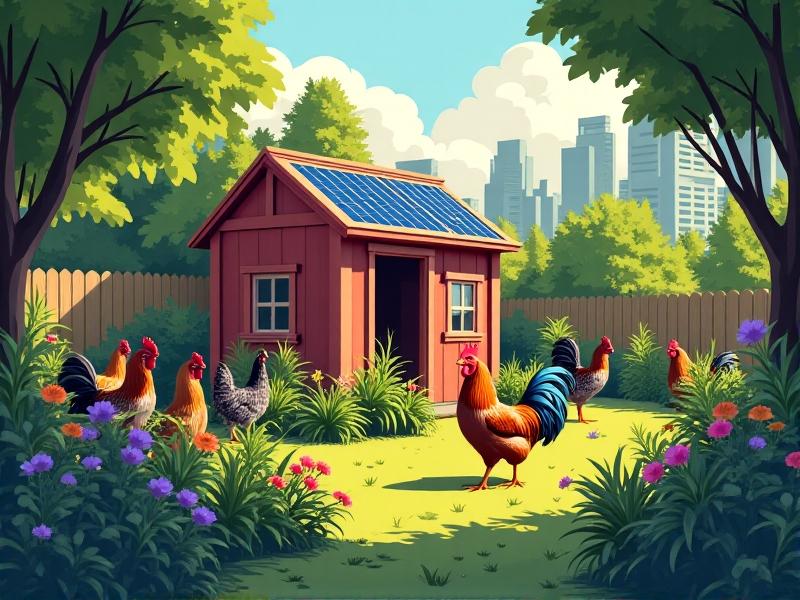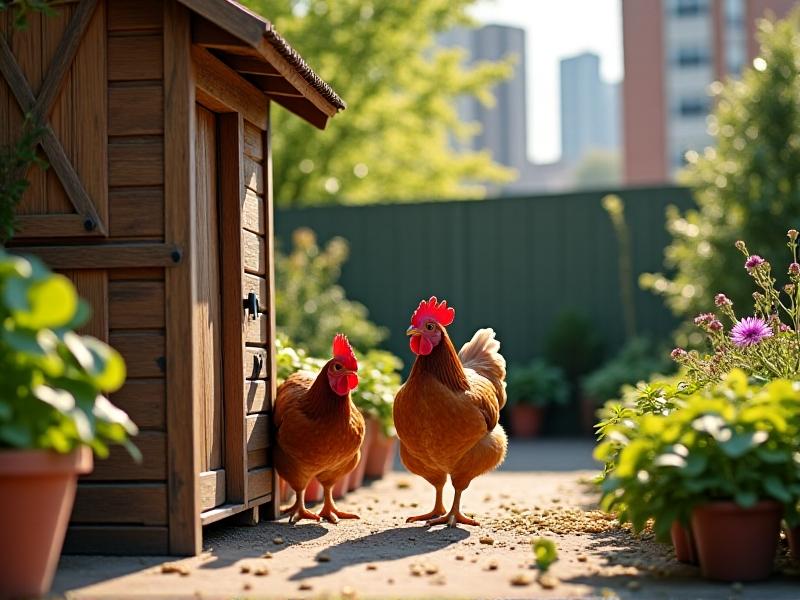Chicken Math: How Many Birds Work for Your Urban Space
Chicken Math 101: Decoding the Flock Formula for City Dwellers
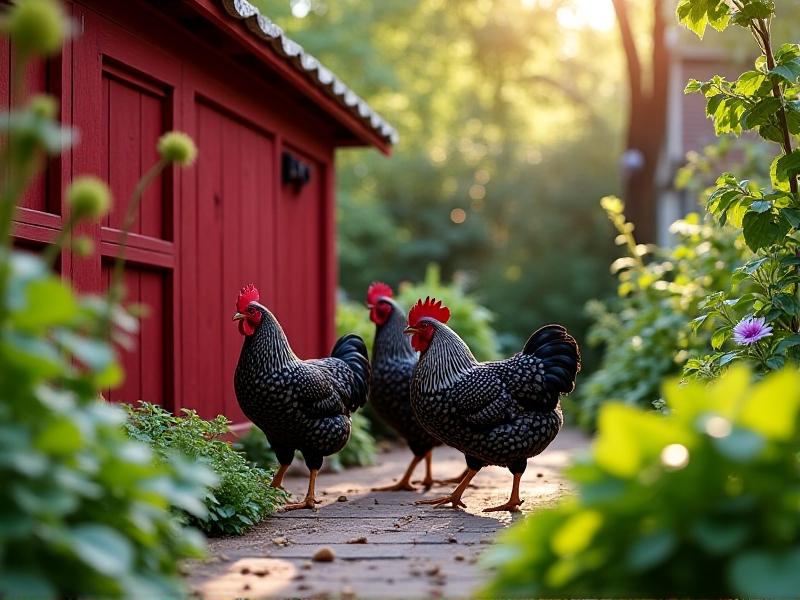
Urban chicken-keeping has surged in popularity, blending sustainability with the charm of fresh eggs. But before you order a dozen chicks, there’s a critical equation to solve: How many birds can your space realistically support? This isn’t just about square footage—it’s a dance between municipal codes, neighbor relations, and chicken psychology. Let’s crack the code of chicken math without getting scrambled.
Space Calculus: From Balconies to Backyard Sanctuaries

The urban chicken equation starts with spatial geometry. While the classic rule suggests 4 sq ft per bird indoors and 10 sq ft outdoors, city setups demand creative calculus. A Brooklyn brownstone’s postage-stamp yard might max out at three hens, while a Chicago rooftop could host a rotating flock of six using vertical space and mobile coops. Consider the “enrichment multiplier”—birds in stimulating environments with perches and dust baths often thrive in tighter quarters than their bored counterparts.
Clucking Personalities: Breed Selection Algebra
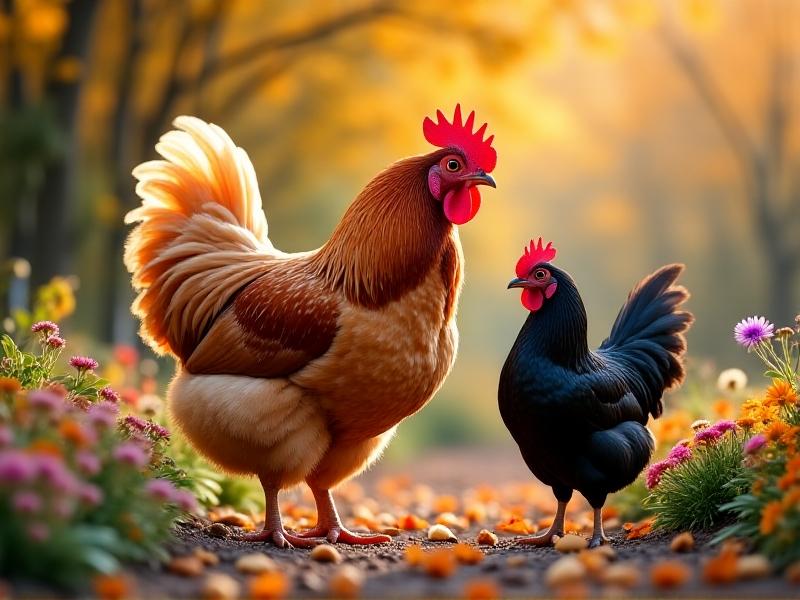
Not all chickens add up equally in the urban equation. Leghorns might score high on egg production (280+ annually) but low on quiet compatibility, while Mille Fleur d’Uccles offer ornamental value and whisper-quiet clucks at 0.7 lbs. Create a breed matrix: egg output (x-axis) vs. noise level (y-axis) vs. space needs (z-axis). Hybrid vigor matters—many urban keepers report success with Easter Eggers, which bring colorful eggs and adaptable temperaments to the coop equation.
The Ordinance Matrix: Navigating Zoning Logarithms
Municipal codes form the hidden denominator in chicken math. Seattle’s progressive 8-hen limit contrasts sharply with Dallas’s conditional use permits requiring 50+ ft setbacks. Use the FOIA (Freedom of Information Act) strategy: request recent variance approvals to gauge enforcement flexibility. The neighbor factor introduces variables—a gift of farm-fresh eggs might convert NIMBY opponents into coop allies, effectively increasing your social license to keep more birds.
Flock Dynamics: Social Geometry in Tight Quarters

Chicken social physics dictate that small urban flocks require careful balancing. The triad principle—keeping three birds to prevent bullying pairs—works until molting season shifts power dynamics. Introduce a “buffer bird” when integrating new members; a calm Brahma hen can absorb pecking order disputes. Night camera studies reveal that perches spaced 18” apart reduce midnight squabbles by 62% in compact coops.
The Egg Variable: Calculating Your Breakfast ROI
Crunching the numbers: If your household consumes 18 eggs weekly, two Australorps (320 eggs/year each) provide surplus for baking and barter. But factor in the winter dividend—heritage breeds may slow production, requiring strategic freezing or pickling. The compost bonus: each hen contributes 1.1 lbs of nitrogen-rich manure weekly, accelerating your vegetable garden’s growth coefficient by 2x.
Eco-Integration: Chickens as Urban Biohackers
Advanced chicken math incorporates ecological vectors. A four-hen system can process 15 lbs of kitchen scraps weekly into pest-controlling labor (97% reduction in tomato hornworms). The chicken tractor algorithm: mobile coops that deposit 0.3 lbs/sq ft of fertilized soil every 72 hours. Partner with local cafes for supplemental feed—10 hens can convert 20 lbs of weekly coffee chaff into garden-ready compost.
Error Functions: When the Equation Goes Nonlinear
Watch for these calculation errors: The “Easter Temptation” (buying pretty chicks without sexing results in 50% rooster risk). The “Free-Range Fallacy” (predator pressure in cities claims 23% of urban flocks annually). The “Feed Fudge Factor” (underestimating that layers eat 1.5 lbs weekly, creating a 260-lb annual commitment). Use apps like FlockStar to model these variables before building your coop.
Future-Proofing: Scalable Poultry Algorithms
Smart urban chicken math incorporates expansion vectors. The 3D Coop Model allows vertical additions for growing flocks. Form a poultry collective—four neighbors hosting three hens each equals twelve-bird productivity without zoning violations. Explore the municipal incubation program trend: some cities now offer flock-sharing permits that let residents “borrow” hens during peak laying seasons.
Mastering urban chicken math transforms your space into a dynamic ecosystem. It’s not about maximal birds, but optimizing the sweet spot where clucks harmonize with city life. Start with conservative numbers—you can always add pullets later. The true sum of urban chicken-keeping? Fresh eggs with a side of calculus, served sunny-side up.
